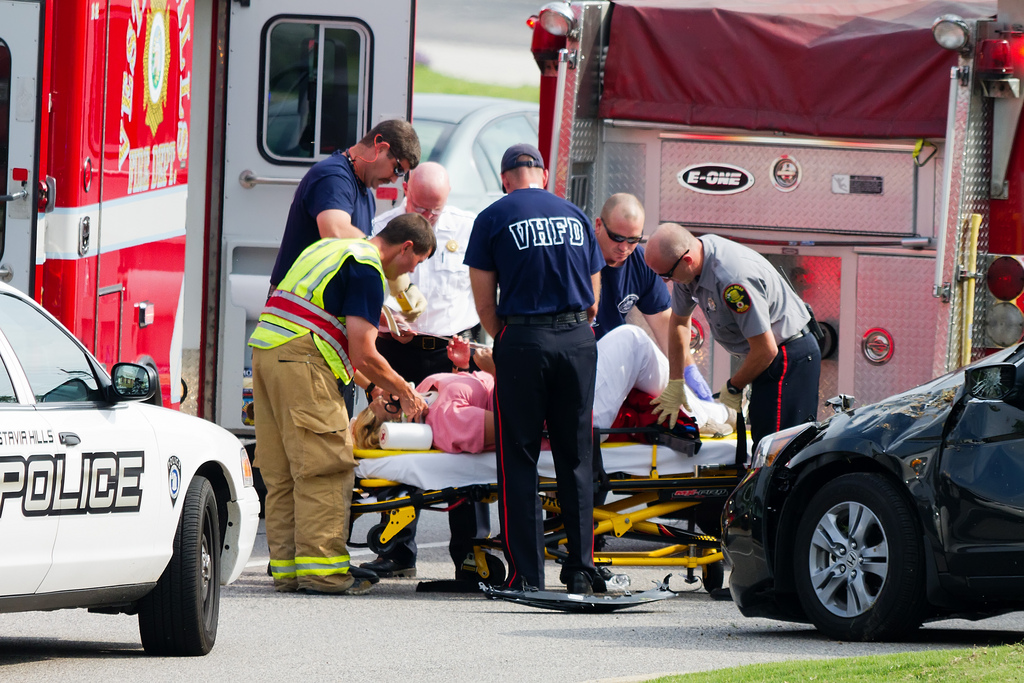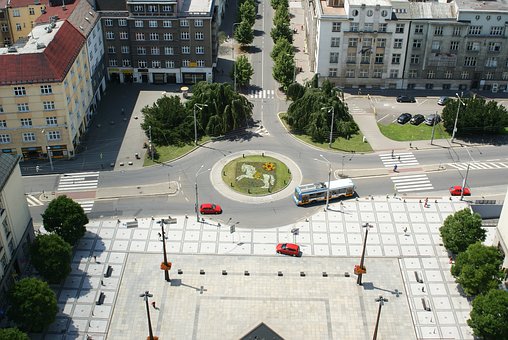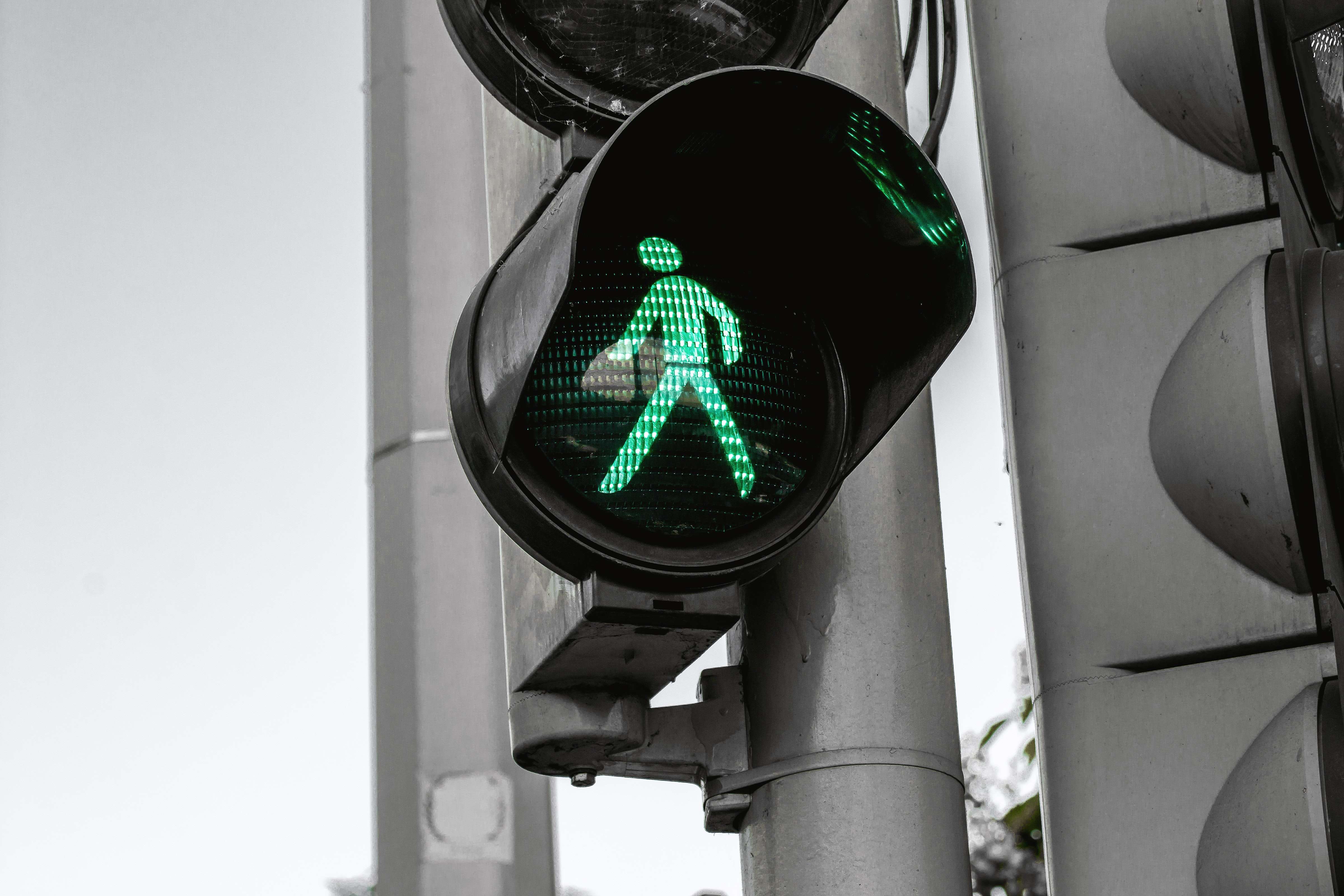I remember the day vividly.
My sister and I were driving to the grocery store to pick up forgotten items from previous runs by my mom. We came to an intersection, turning to the left, when a car came speeding through the stop sign without hesitation and directly struck my passenger side door.

Thankfully, everyone involved suffered only minor injuries and of course, shock from being in a crash. I was lucky. But unfortunately, most are not.
In fact, according to a 2018 website directly geared towards automobile crash statistics, 2.5 million intersection accidents are reported annually in the United States alone. Fifty percent of those collisions are considered serious, and require hospitalization. And twenty percent are fatal.
So what’s the best solution to these intersections of death?
Introducing…
The Traffic Circle

Efficiency
No matter what you call them, traffic circles, roundabouts or rotaries, they are undeniably more effective than any intersection or stoplight sequence on the roads today. They keep vehicles moving at all times, resulting in less congestion overall. According to the Washington State Department of Transportation, traffic circles “promote a continuous flow of traffic” and “Traffic is not required to stop, only yield, so the intersection can handle more traffic in the same amount of time.” [perfectpullquote align=”right” bordertop=”false” cite=”” link=”” color=”” class=”” size=””]”Traffic is not required to stop, so the intersection can handle more traffic in the same amount of time.”[/perfectpullquote]So the amount of vehicles going through a traffic light in say, one hour, would be the same as those cars going through a roundabout in half the time.
This same article mentions a Kansas State University study, in which those leading the study measured the amount of traffic at intersections or high collision points before and after the installation of a traffic circle. The study concluded that the traffic circle “reduced delays by twenty percent”. This in turn allows people to get where they are going, not only faster, but in a safer manner as well.
Cost
The cost of a traffic circle compared to a traffic light, is one worth noticing.

On average, according to an online article written by ACS Engineers, discussing the pros and cons of traffic circles, “roundabouts are $5000 to $10,000 cheaper per year as there are no electrical costs involved.” Not to mention, the wear and tear of roundabouts is significantly less than those of stoplights. Stoplights, made of metal, eventually rust and need replacing after time in extreme cold, rain or snow. Traffic circles are made of concrete, and require little maintenance in the way of replacements. Additionally, Washington State Department of Transportation reports that “roundabouts eliminate hardware, maintenance and electrical costs associated with traffic signals.” Allowing traffic circles to be implemented into city life, means allowing tax dollars to be used in areas where it is needed, not to repair traffic junctions. [perfectpullquote align=”right” bordertop=”false” cite=”” link=”” color=”” class=”” size=””]”roundabouts eliminate hardware, maintenance and electrical costs associated with traffic signals.”[/perfectpullquote]
Roundabouts have been proven to use gas more efficiently, saving driver’s money. According to a Times Colonist article written by Steve Wallace, “Roundabouts are good for the environment. There is less wear and tear on tires and brakes, and fuel efficiency increases.” This is very true. When a car is forced to come to a complete stop, and then resume after a few minutes of idling, the amount of gas used is much more than a car continuously driving.
Opposing Side
Traffic circles however, are not for everyone. The blind have more trouble with these circles than they had with the original designs before. With the lack of time sensitive buttons, and audible cues of traffic lights, the blind face a more difficult challenge, which could end up costing them their life.
Wallace notes in his Time Colonist article, sight abled people have expressed their concerns with traffic circles, saying they too feel it is difficult to cross a roundabout quickly and safely. “Drivers have a tendency to look only left when entering the roundabout, sometimes ignoring danger on the right” writes Wallace.
[perfectpullquote align=”left” bordertop=”false” cite=”” link=”” color=”” class=”” size=””]”Drivers have a tendency to look only left when entering the roundabout, sometimes ignoring danger on the right”[/perfectpullquote]

An article written by Brian Ficek expresses the concerns over emergency vehicles unable to get through traffic circles. “Roundabouts give equal treatment to every approach. For emergency vehicles, their priority rests on drivers getting out of and staying out of the way.” This simple inconvenience could very well be putting a patient’s life at risk.
Safety
Though pedestrians may have a less than enjoyable experience using the roundabouts, what improves dramatically with the addition of such a structure is collision related deaths in vehicles.
In a 2014 article by the Minnesota Department of Transportation, reported that “Single Lane Roundabouts in Minnesota have shown an 80% reduction in
fatal and serious injury crashes.” This dramatic safety improvement stems from a variety of factors.
People Slow Down
Because of the natural shape of a traffic circle, this forces them to slow down while turning around its corners. The slower a car is moving before a collision, the less serious the collision will be.
Attention On High Alert
The way traffic circles are set up force oncoming cars to become more alert. With yield signs at each entry of the circle, drivers take the time to look around and are sure they can continue safely to their route.
Provides a ‘Safer Feeling’
When vehicles slow down, it can quite literally provide an almost soothing and smooth transition from fast paced traffic to slower paced moving vehicles. These circles act as a transition from craziness to order.
Round is the Way to Go
Now, I’m not saying all cities across the world should adopt to the traffic circle method. That would be an almost impossible task for cities in poverty or cities with dramatic landscapes. But what we can do is reduce accidents, save money, and train drivers to become more alert if cities who can accommodate traffic circles do so. Any involvement in a collision is an experience most people would not like to have, and Traffic Circles can be a simple, circular solution.
Featured image by Pexels
